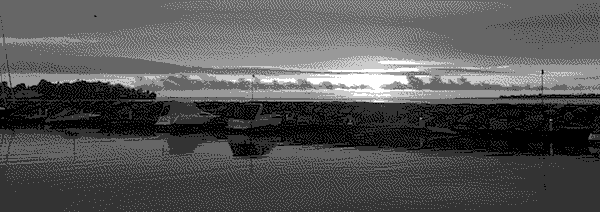The Dam and the Rusalkae

Please do not drink from the lake.
That’s what the crumbling wooden sign at what was once Lake Notoro said. Before it was planted in the aged soil, there was a much longer and lengthier sign, covered in symbols and with warnings in both Japanese and Russian. Unfortunately, few things last forever, and the lake had outlasted many signs before it.
What it did not fully outlast was the town of Moss Bay. Initially, many of those living near the lake had settled a few minutes to the east. Some were locals from nearby who had survived the destruction that reshaped history; others were boaters from Russia and elsewhere that had been fortunate enough to remain at sea as everything changed on land.
Per the town’s oral tradition, things picked up for Moss Bay when those who had been on motorboats or cruises docked at the first place they saw lit by fire and inhabited by humans. They brought with them electric power generators, chiefly, but other bits and bobs of technology that were quickly put to the best possible use. Arguments did break out, but they were about whether a greenhouse or a hospital would be the best use of the power they had. Ultimately, though, both were eventually built.
But before that could happen, water, and its use, was the turning point for Moss Bay -- and the reason it was named for its largest water source. Catchment water was easy to come by in summer, but had to be saved in the winter. And Moss Bay itself grew a great deal of salicornia grass, which the survivors misidentified as moss, lending it its name.
With or without “moss”, however, ocean water was not safe to drink, and desalination seemed like a pipe dream. So instead, the water of Moss Bay was used for power. The building of a hydroelectric dam, which took five years, is one of the most commonly-retold parts of Moss Bay’s history.
So, too, is the part that followed. Although the city had power, that alone could not guarantee them drinking water. Rationing was strict year-round, even in the rainy season when it seemed in abundance. Much of the power that they now had went to producing plastic and metal buckets to catch more water. Not only did this leave less water for farming, but it prevented them from building their own technology as well.
But this situation was an opportunity for the lake’s original inhabitants. A trio of sisters, skin as cold and blue as winter’s ice, emerged, dripping wet, to speak to those who maintained the dam. They said that they would provide clean drinking water from the lake, regularly, if the dam was only run in the autumn and winter months when they slumbered at the lake floor.
At first, the workers themselves, and the inhabitants of Moss Bay they brought the offer to, were unsure how to react. The destructive forces that had transformed the world had also brought creatures of myth to it, and they were called demons.
Few in Moss Bay had significant trust of demons. They had collaborated with humans when it had benefited them both, or more often, when it had benefited the demon more. But a few particular voices made a compelling argument in the sisters’ favour: they had clearly existed in the lakebed for a long time, and would be happy to coexist with a settlement of humans that would negotiate in good faith.
Ultimately, five young volunteers agreed to sample the first shipment of water from the rusalka after the dam was modified. All five said it was the crispest, cleanest water they’d had the pleasure of tasting in their lives. And so, it was codified: the people of Moss Bay would treat the rusalka sisters with respect and avoid drinking from the lake, not because it was toxic but because they would provide the best possible water on their own.